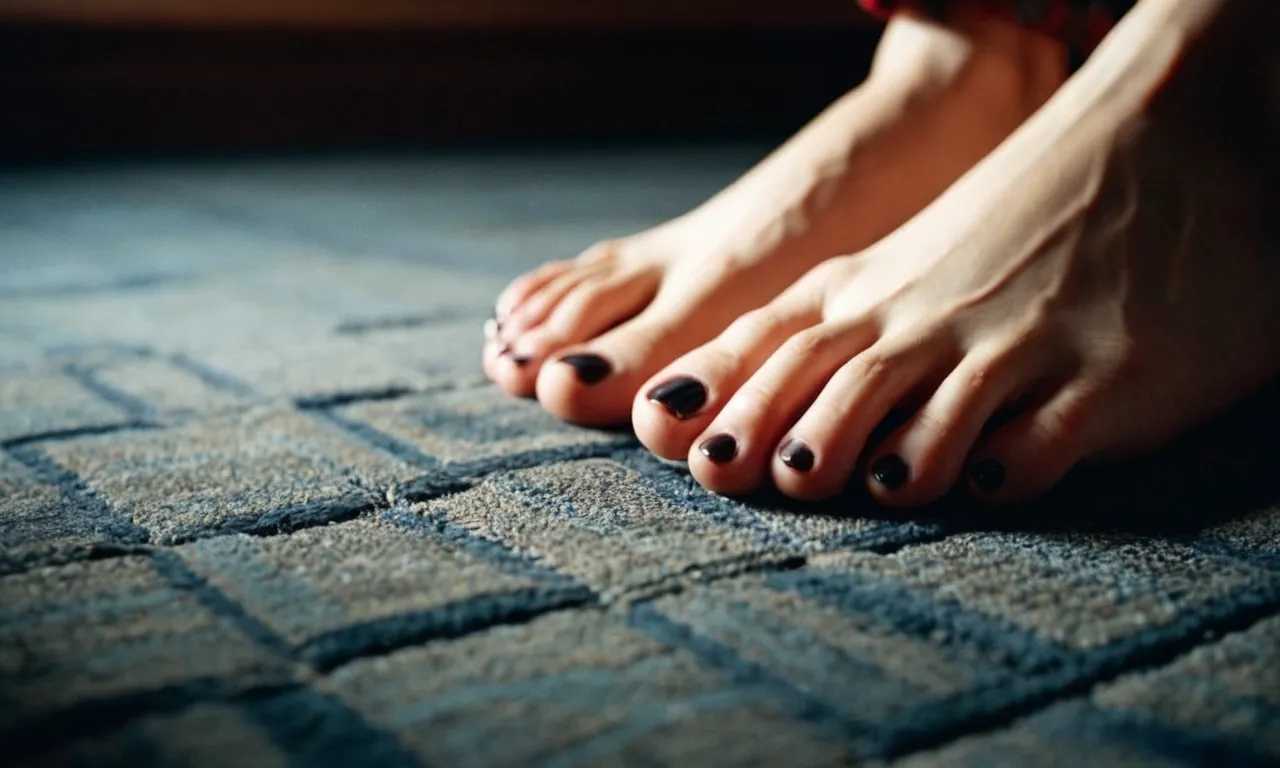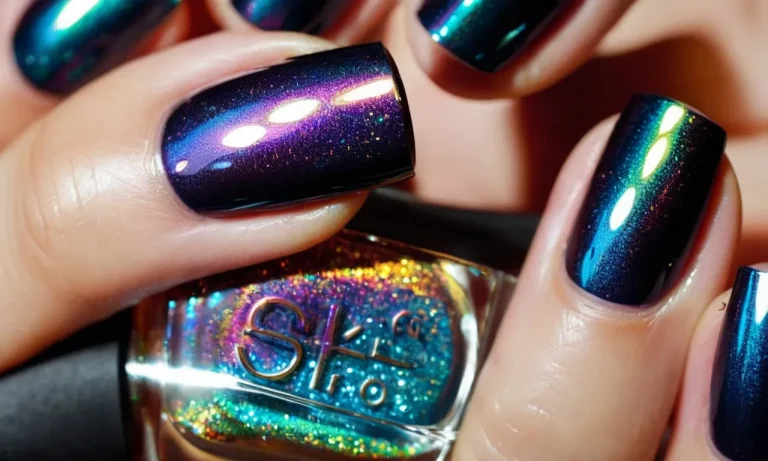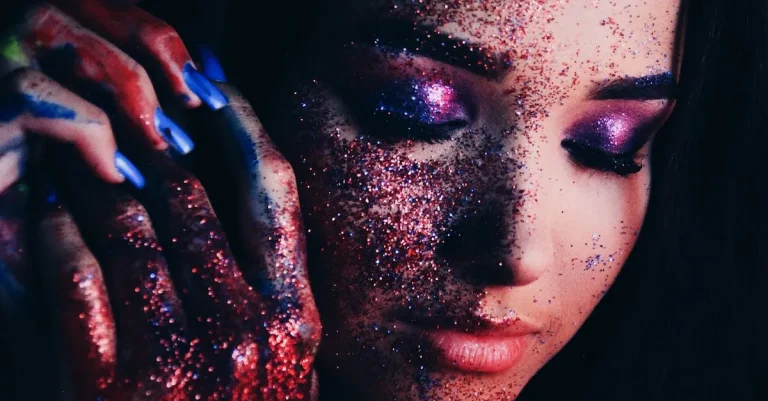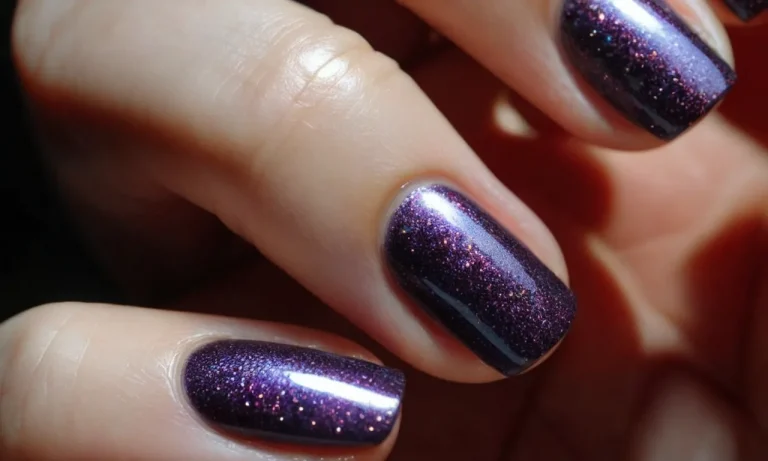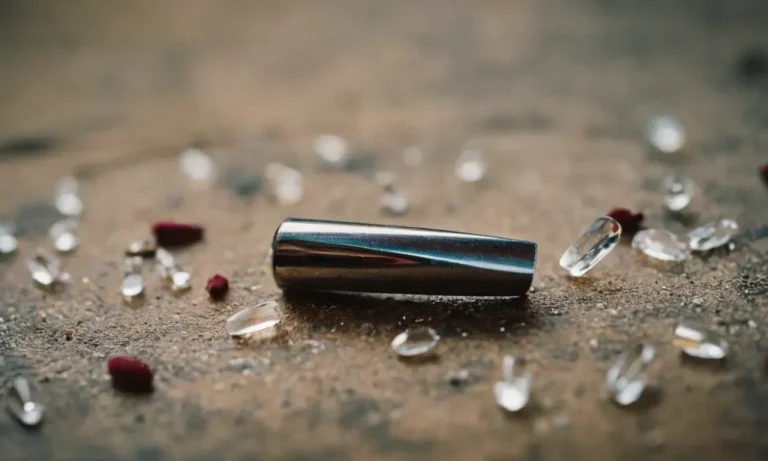Dark Marks On Toenails: Causes And Treatment Options
If you have noticed dark lines, spots, or streaks on your toenails, you may be wondering what’s causing them and if they are anything to worry about. Dark marks on toenails are actually quite common and usually harmless.
If you’re short on time, here’s a quick answer to your question: Dark marks on toenails are often caused by minor trauma or injury to the nail bed. They are generally harmless, but can sometimes indicate an underlying condition like a fungus.
In this comprehensive guide, we will cover the various potential causes of dark marks on toenails, when you should seek medical advice, treatment options to remove stubborn marks, and tips to help prevent dark marks from occurring.
What Causes Dark Marks on Toenails
Minor injury or trauma
Our poor toes take quite a beating! Even small injuries like stubbing a toe can cause blood vessels under the nail to rupture and leak, leading to purple, red or brown discoloration. This is especially common in athletes and runners. The marks usually grow out with the nail over several months.
Frequent trauma can permanently discolor the nail bed.
Fungal infections
Toenail fungus, also called onychomycosis, can cause nails to thicken, crumble and change colors. Fungus invades the nail bed and keratin cells, leading to yellow, brown or black discoloration as debris builds up under and within the nail.
Toenail fungus is contagious and thrives in warm, moist environments like public pools, locker rooms and showers. Wearing clean, dry socks and shoes can help prevent infections.
Melanonychia
Dark brown or black bands appearing on a nail are called melanonychia. Melanin pigment produced by melanocytes can abnormally accumulate in a localized area, creating these lengthwise marks. While usually benign, sometimes dark bands indicate a mole or melanoma below the nail matrix.
See a dermatologist promptly if you notice a new melanonychia to rule out melanoma, especially if you have a darker skin tone.
Bruising under nail
Blood collecting under the nail is called a subungual hematoma. The pooling blood turns the nail bed purple or black. Subungual hematomas usually occur from trauma like smashing a finger. The discoloration grows out as new nail grows.
See a doctor if the bruising is accompanied by throbbing pain which could indicate a fractured bone.
Medications
Certain medications like antimalarials, chemotherapy drugs and some antibiotics can cause nails to temporarily turn dark colors. The discoloration is harmless and fades after stopping the medication. Check with your pharmacist if new medication coincides with nail discoloration.
Aging
As we age, nail growth slows and nails can develop dark streaks or spots due to minor trauma, thinner nails, and impaired circulation. Some hidden health issues like vitamin deficiencies, diabetes or liver problems may also manifest as nail discoloration in seniors.
Check with a doctor if nail changes seem abnormal.
When to See Your Doctor
Spreading mark
If you notice a dark streak on your toenail that appears to be spreading or getting bigger, it’s important to see your doctor. A spreading dark mark can indicate an infection or toenail fungus, which requires treatment.
Don’t try to self-diagnose or self-treat a spreading dark streak – see your doctor promptly for an evaluation.
Discolored streak starts at nail matrix
The nail matrix is the part of your nail under the cuticle where new nail cells are made. If you notice a dark discolored streak under the cuticle that extends down your nail, it likely indicates a problem with the nail matrix, such as melanoma.
See your dermatologist right away – a dark streak originating from the nail matrix should always be professionally evaluated.
Dark color along entire nail
When an entire toenail turns dark brown or black, it’s almost always a sign of a fungal infection. However, other causes are possible, including bacterial infection, trauma, and certain medications. Don’t try to self-diagnose.
Make an appointment with your podiatrist or dermatologist to determine the cause and get proper treatment.
Rapid nail growth
If your toenail seems to be growing much faster than normal, bringing you in for frequent pedicures, see your doctor. Rapid nail growth can indicate a fungal or yeast infection. It can also signal an underlying condition affecting your health.
Your doctor can do tests to find the cause and recommend treatment options.
Additional symptoms present
See your doctor promptly if you notice a dark toenail mark along with any additional symptoms, such as pain, swelling, foul odor, pus, numbness, or tingling. These can indicate an infection or more serious condition requiring medical care.
Don’t ignore additional symptoms – it’s important to get an accurate diagnosis and appropriate treatment.
Treatments and Home Remedies
Antifungal creams or oral meds (for fungal cause)
If a fungus is the culprit behind your dark toenails, your doctor may prescribe an oral antifungal medication like terbinafine or itraconazole. For milder cases, an over-the-counter antifungal cream containing clotrimazole or miconazole may do the trick when applied directly to the affected nail(s) daily.
These treatments help clear up the infection so new, healthy nail can grow back in.
Trimming away discolored part of nail
Carefully trimming off the darkened portion of an affected toenail can help reduce the appearance of darkening. Use sterilized nail clippers and take care not to cut the nail too short, which risks injury. File the nail edge smooth when done.
Repeat the trimming as needed as new discolored nail grows out.
Using a file and buffing block
Gently filing off surface stained layers with a nail file and then buffing with a nail buffing block can help lighten mildly darkened toenails. It may take time and repeated filing/buffing to see results. This method is more for cosmetic improvement and won’t treat an underlying medical cause.
Over-the-counter stain removers
Look for an over-the-counter nail stain remover product at your local drugstore or beauty supply retailer. These typically contain hydrogen peroxide or acetic acid and are brushed onto the nail surface to help lift stains.
Applying daily and letting it soak in can lighten dark toenail discoloration over time.
Bleach soaks (hydrogen peroxide or chlorine dioxide)
Soaking nails in dilute bleach solutions may have a whitening effect. Some dermatologists recommend soaking affected nails for 10 minutes per day in a 3:1 mix of water and hydrogen peroxide. Other bleaching agents like chlorine dioxide can also be used. Rinse nails after soaking and pat dry.
Take care not to get the solutions on the surrounding skin.
Topical vitamin E oil
Applying a drop of vitamin E oil to each darkened toenail and massaging in daily may gradually help reduce staining over time. It’s an easy home treatment to try. Just be consistent and patient.
Tea tree oil
Tea tree oil is a natural antifungal agent. Applying it to dark toenails, especially if fungal infection is the cause, may have a lightening effect with consistent use over weeks. Use a cotton swab to brush pure tea tree oil onto each nail. Let it soak in.
Baking soda paste
Mix baking soda with a few drops of water to form a paste. Apply this homemade paste onto discolored toenails using a cotton swab or fingers. Let it sit for 5 minutes before rinsing off. The abrasiveness of baking soda may help buff off some surface stains when used regularly.
Lemon juice
Some people find that rubbing lemon juice onto dark toenails and letting it soak in helps lighten staining. The natural acidity of lemon juice may have a bleaching effect over time. It’s easy to try at home, but can cause skin irritation in some people so test on a small area first.
Prevention Tips
Wear properly fitting shoes
Wearing shoes that are too tight or too loose can put excessive pressure on your toenails, leading to injury. Properly fitted shoes allow enough room for your toes to wiggle while still providing adequate support. If your shoes are rubbing against your nails constantly, it’s time to get a new pair.
Trim nails properly
Cutting your toenails too short increases the risk of ingrown nails and repeated trauma. Use nail clippers or scissors to trim your nails straight across and avoid rounded edges. Leave a small amount of white showing at the tip of each nail. File any sharp edges with an emery board.
Wear protective footwear
When participating in activities where your feet will endure impact or compression forces, wear appropriate protective footwear. Boots, athletic shoes, steel-toe shoes, and hiking boots can shield your toes from injury. Replace sports shoes regularly to maintain their shock-absorbing capabilities.
Treat athlete’s foot promptly
The fungal infection known as athlete’s foot can lead to thick, discolored nails. Use over-the-counter antifungal creams at the first sign of scaling or itching between the toes. Keeping your feet clean and dry can help prevent recurrence of symptoms.
Avoid repeated trauma to nails
Injuries to the toenails, such as stubbing your toe or dropping something on your foot, can damage the nail bed. Be mindful of your surroundings and wear steel-toed boots or shoes in hazardous environments. Take care to avoid repeated trauma which can promote dark marks.
Wear moisture-wicking socks
Choose socks made from moisture-wicking fabrics like wool or acrylic blends. Cotton socks retain sweat, creating a damp environment where fungi can thrive. Change your socks frequently if they become wet from perspiration or external moisture.
Disinfect nail tools properly
Any tools used on infected nails can spread the fungus if not properly disinfected. After each use, sanitize nail files, clippers, and scissors with isopropyl alcohol or peroxide. Never share pedicure instruments with others.
Conclusion
While dark marks on toenails are rarely cause for concern, it’s still a good idea to understand what underlying conditions may be causing them. Catching and properly treating a fungal nail infection early can help prevent permanent nail discoloration.
With the tips in this article, you now know how to get rid of pesky dark marks on your nails using home remedies. However, if the marks spread or you experience additional symptoms, seeking medical advice is recommended to rule out any serious underlying causes.

